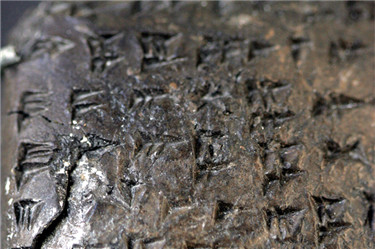
Photo credit: Rama
圖片引自:Rama
7、Hurrian Civilization
胡里安文明
Another civilization which influenced the Hittites was the Hurrian people, who lived throughout the Middle East during the second millennium B.C. It’s probable that they were around even earlier than that: Personal and place names written in the Hurrian language were found in Mesopotamian records dating back to the third millennium B.C. Unfortunately, very few artifacts of their civilization exist; most of what we know about them comes from the writings of other cultures, including the Hittites, Sumerians, and Egyptians.
另一個對赫梯人產(chǎn)生過所影響的,是胡里安文明。胡里安人分布于中東地區(qū),生活在公元前的第二個千年里(譯注:即指公元前2000~公元前1000年)。他們或許在更早的時代就出現(xiàn)了:以胡里安語書寫的人名和地名被發(fā)現(xiàn)存在于美索不達米亞的歷史資料中,后者可追溯至公元前的第三個千年。不幸的是,只有非常少量的胡里安文明手工制品存在于世;我們對他們的所知主要源于 包括包括赫梯、蘇美爾以及埃及在內(nèi)的其他文明的記載。
One of their largest cities is known as Urkesh and is located in northeastern Syria. Urkesh is also where the earliest known text in Hurrian, a stone tablet and statue known as the Louvre lion, was found. Long believed to be mainly nomadic, scholars now believe that the Hurrians may have had a much bigger impact than previously thought, mostly due to the way their language differed from other Semitic and Indo-European tongues. However, by the end of the second millennium B.C., nearly all ethnic traces of the Hurrians had disappeared, with only their influence on the Hittites left behind.
胡里安人最大的城市之一是沃克什(Urkesh),坐落在今敘利亞北部。沃克什亦是胡里安最早的文本——一個石碑和被稱為羅浮獅的雕像——的發(fā)現(xiàn)地。長期以來人們認為胡里安人以游牧為主。如今,學者們認為胡里安人所產(chǎn)生過的影響或許比我們原想的更大,主要基于其語言與其他閃米特和印歐語系語言差異的形式。無論如何,在公元前第二個世紀的末尾,胡里安民族的蹤跡幾乎全部消失,只剩他們對赫梯人的影響流傳下去。











